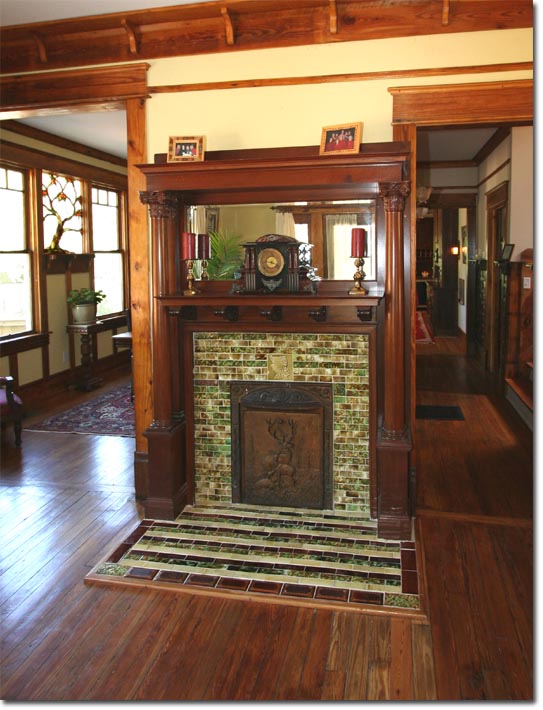 When we started restoring our house, which is a Victorian/Craftsman bungalow hybrid, the sky was the limit as far as aesthetics go. The house had been mostly robbed of its architectural treasure and converted into a triplex. Several original mantels were long gone, the dining room stained glass was missing, and most of the original doors and trim were history. What we had to restore was pretty sparse: one amazingly ornate dining room mantel, a few 5 panel doors, the heart pine floors, the dining room wainscoting, and a clawfooted tub. From the time we agreed to purchase the house, we knew that most of the character the house would possess at the end of the day was going to come in the form of salvaged transplants.
When we started restoring our house, which is a Victorian/Craftsman bungalow hybrid, the sky was the limit as far as aesthetics go. The house had been mostly robbed of its architectural treasure and converted into a triplex. Several original mantels were long gone, the dining room stained glass was missing, and most of the original doors and trim were history. What we had to restore was pretty sparse: one amazingly ornate dining room mantel, a few 5 panel doors, the heart pine floors, the dining room wainscoting, and a clawfooted tub. From the time we agreed to purchase the house, we knew that most of the character the house would possess at the end of the day was going to come in the form of salvaged transplants.
So, we started to amass some potential pieces that fit the woodworking style and themes set forth by our original builder, Frank Ruggles. We knew that we needed a grand entry that echoed similar entryways built by Frank Ruggles (our builder who hailed from Boston). We visited other houses of his (and happened to live in one) and took pictures of architectural details such as column capitals, brackets, shingles, stained glass, doorways, and porches. We knew that we needed a front door and sidelights and some interesting woodwork. We knew we needed more heart of pine flooring for our proposed addition. We also wanted to find stained glass, plumbing fixtures, perhaps some tin ceiling, antique tile, wainscoting, and two mantels.
And frankly, what inspired us to move from our lovely house right next door, was an ornate mahogany mantel in flawless condition. I stumbled on this piece on Craigslist and drove to an Alpharetta antiques mall to check it out. Hidden under doilies and china and fronted by other tables, I couldn’t see it at first. Once uncovered, it was just amazing. Someone had taken great care to restore the piece and it almost looked newly milled, except for warm glow of aged mahogany and the history in the form of a tag from a Pennsylvanian cabinetmaker from the late 1800s glued to the back. I bought it for a great price and knew immediately that it would be the focal point in the foyer—the first thing that someone saw when they entered the house. At that point, the house began to take shape and come to life in my mind’s eye.
The mantel piece lived in our garage as we worked on the house next door and everyday when I got out of the car, I appreciated it. At some point, I started to realize that parting with it would be tough. Eventually, it precipitated discussions about moving next door, which planted the seed, became appealing, and eventually happened.



